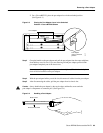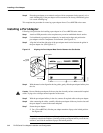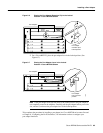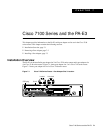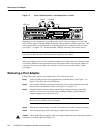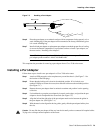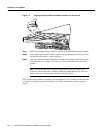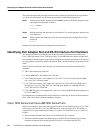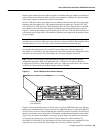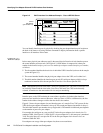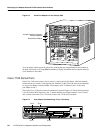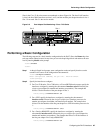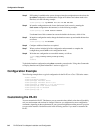
CHAPTER
Configuring the PA-E3 Interfaces 8-1
8
Configuring the PA-E3 Interfaces
To continue your PA-E3 serial port adapter installation, you must configure the E3 interfaces. The
instructions that follow apply to all supported platforms. Minor differences between the platforms
are noted. This chapter contains the following sections:
• Using the EXEC Command Interpreter, page 8-1
• Identifying Port Adapter Slot and PA-E3 Interface Port Numbers, page 8-2
• Performing a Basic Configuration, page 8-7
• Configuration Example, page 8-8
• Customizing the PA-E3, page 8-8
• Configuring Cyclic Redundancy Checks, page 8-10
• Checking the Configuration, page 8-11
If you installed a new PA-E3 or if you want to change the configuration of an existing interface, you
must enter configuration mode using the configure command. If you replaced a PA-E3 that was
previously configured, the system recognizes the new PA-E3 interfaces and brings each of them up
in their existing configuration.
After you verify that the new PA-E3 is installed correctly (the enabled LED goes on), use the
privileged-level configure command to configure the new interfaces. You will need the following
information for your configuration:
• Protocols you plan to route on each new interface
• Internet Protocol (IP) addresses if you are configuring the interfaces for IP routing
• Plan to use bridging or not on the new interfaces
• Timing source for each new interface and clock speeds for external timing
For a summary of the configuration options available and instructions for configuring interfaces on
the PA-E3, refer tothe appropriate configuration publications listed inthe “Related Documentation”
section on page vi.
Using the EXEC Command Interpreter
You modify the configuration of your router through the software command interpreter called the
EXEC (also called enable mode). You must enter the privileged level of the EXEC command
interpreter with the enablecommand before you can use the configure commandto configure a new
interface or to change the existing configuration of an interface. The system prompts you for a
password if one is set.



